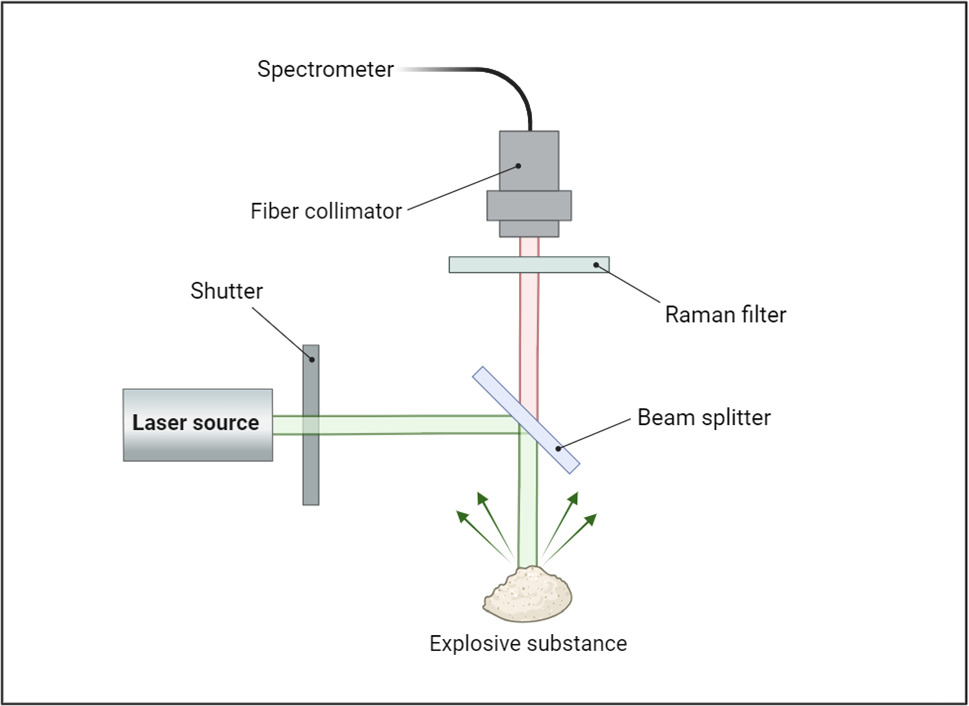https://doi.org/10.1140/epjp/s13360-025-06702-5
Regular Article
Fast and safe detection of sensitive explosives via pulsed raman spectroscopy
1
German Aerospace Center (DLR) - Institute for the Protection of Terrestrial Infrastructures, 53757, Sankt Augustin, Germany
2
Bonn-Rhein-Sieg University of Applied Sciences - Institute for Detection Technologies IDT, 53359, Rheinbach, Germany
Received:
28
March
2024
Accepted:
28
July
2025
Published online:
7
August
2025
Raman spectroscopy is one of the most established methods for the rapid and reliable detection of explosives and other hazardous chemicals. It enables first responders to identify suspicious substances quickly and remotely, avoiding direct contact with potentially dangerous or explosive substances. Present systems available on the market nowadays are small and light enough for mobile use in many applications. However, the measurement of dark coloured substances like black powder or other sensitive explosives harbours the risk of ignition. This is particularly the case if the measurement spot is not changed during the procedure. High absorption of the laser energy usually leads to a strong heat development in the analysed material, leading to decomposition or even ignition of the substance. To overcome this challenge, this work focuses on experiments with a pulsed nanosecond laser with optimized repetition rate and beam fluence. Different sensitive explosive materials such as triacetone triperoxide (TATP), black powder and mixtures of both are irradiated with pulsed laser light to perform Raman analyses. Results show the capability of the presented method to obtain high-quality spectra in short measurement times without any observed ignition of the sensitive explosive material. In addition, the influence of ambient light on the detection performance is evaluated and can be minimized. Further efforts are being made to miniaturize the entire laboratory set-up in order to take first steps towards the development of a portable device.
© The Author(s) 2025
 Open Access This article is licensed under a Creative Commons Attribution 4.0 International License, which permits use, sharing, adaptation, distribution and reproduction in any medium or format, as long as you give appropriate credit to the original author(s) and the source, provide a link to the Creative Commons licence, and indicate if changes were made. The images or other third party material in this article are included in the article's Creative Commons licence, unless indicated otherwise in a credit line to the material. If material is not included in the article's Creative Commons licence and your intended use is not permitted by statutory regulation or exceeds the permitted use, you will need to obtain permission directly from the copyright holder. To view a copy of this licence, visit http://creativecommons.org/licenses/by/4.0/.
Open Access This article is licensed under a Creative Commons Attribution 4.0 International License, which permits use, sharing, adaptation, distribution and reproduction in any medium or format, as long as you give appropriate credit to the original author(s) and the source, provide a link to the Creative Commons licence, and indicate if changes were made. The images or other third party material in this article are included in the article's Creative Commons licence, unless indicated otherwise in a credit line to the material. If material is not included in the article's Creative Commons licence and your intended use is not permitted by statutory regulation or exceeds the permitted use, you will need to obtain permission directly from the copyright holder. To view a copy of this licence, visit http://creativecommons.org/licenses/by/4.0/.





